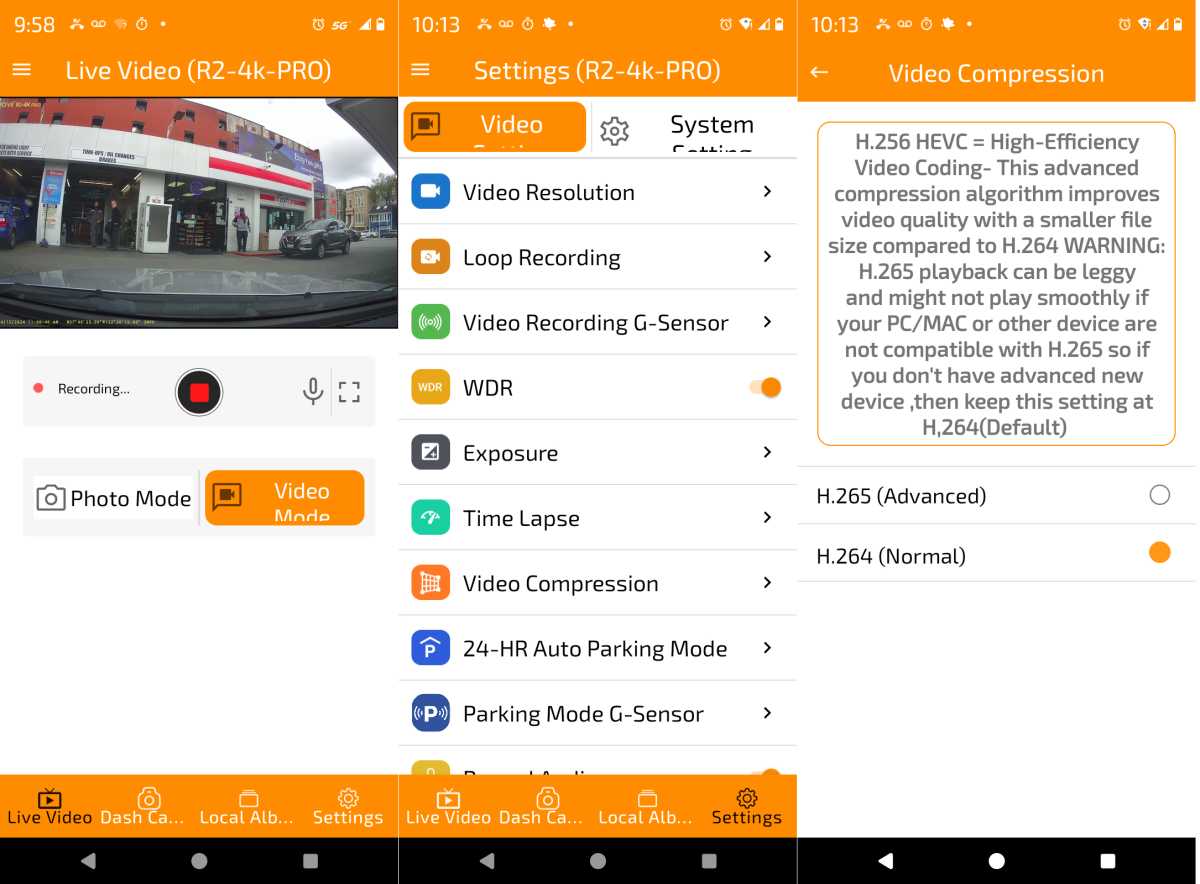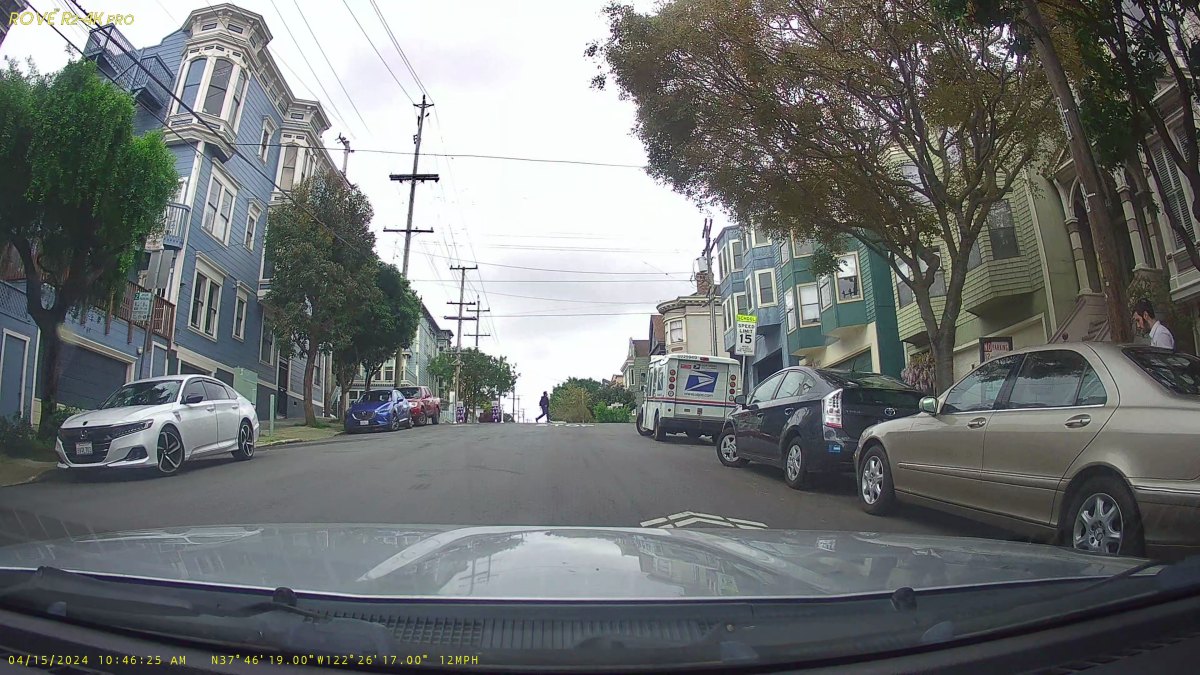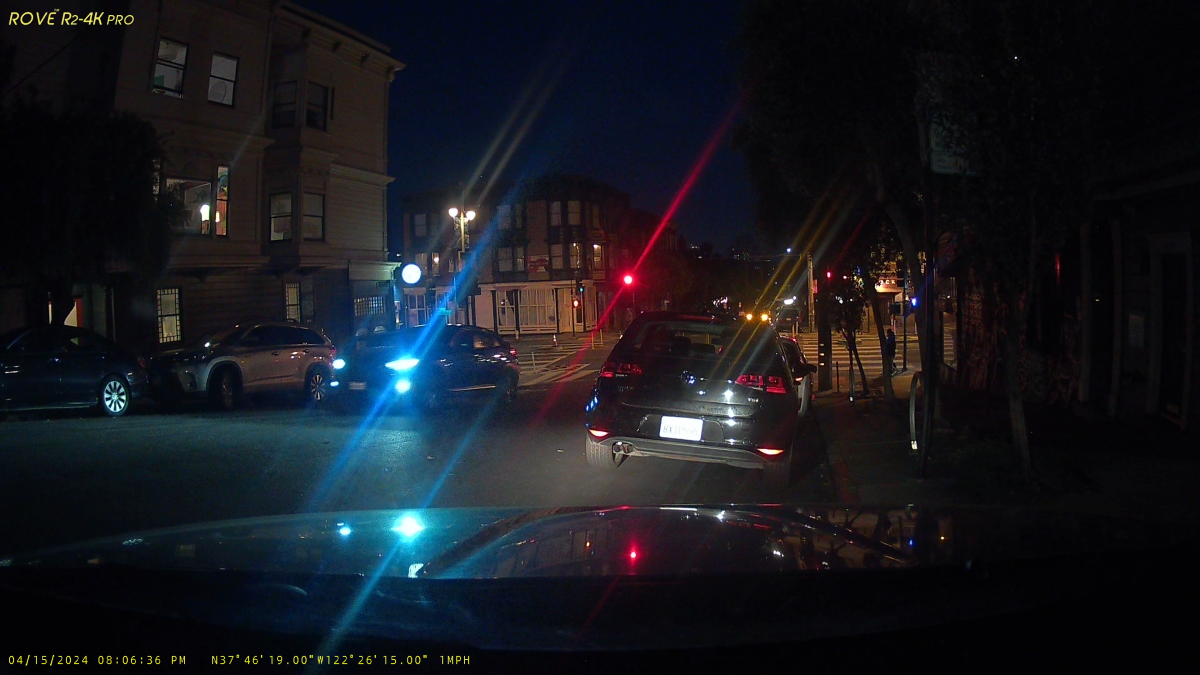Expert’s Rating
Pros
- Small form factor
- Good captures
- Integrated GPS
- Low-priced considering the features
Cons
- Defaults to 2K rather than 4K
- Using the app requires an account
Our Verdict
With integrated GPS, good captures, and phone connectivity, the Rove R2-4K is one of the better bargains in a dash cam that we’ve seen recently.
Price When Reviewed
$129.99
Best Prices Today: Rove R2-4K
$99.99
I’ve reviewed a whole lot of dash cams, but Rove is new to me. Nice to meet you! The company’s R2-4K Pro dash cam sports a robust feature set, including phone connectivity, as well as good captures.
Further reading: See our roundup of the best dash cams to learn about competing products.
What are the Rove R2-4K’s features?
The Rove R2-4K is a single-channel dash cam capable of 2160P captures. It’s black and about average in size at 2.91-inches wide, by 2.35-inches tall, by 1.43-inches thick at the lens body.
The R2-4K ships with a vacuum mount that’s adjustable right/left and vertically, but you’ll need pay a bit of attention to the rotational angle. Placing the suction-breaking pull tab at around 11 o’clock will get you pretty close. This is true of most suction mounts. Once you have it set, the camera easily detaches from the mount.

On the back of the Rove R2-4K is a 2.4-inch color display, with five buttons below it for navigation: Menu, up/mute, emergency lock/Wi-Fi, down/LCD off, and OK. On the right is the Type-C power jack, while on the left are the MicroSD card slot and power button.
The power to said Type-C jack comes from the auxiliary connector. Rove supplies an auxiliary adapter with a single Type-A port
On top of the camera are the TV/video-out and GPS module. Yes, there’s integrated GPS and it connects very quickly — unlike some. Note that the time zone and time must be set manually regardless.
Rove of course provides an app to connect via the Wi-Fi. The app offers a live view and allows you to adjust the rather copious number of settings. You can even switch between h.264 and h.265 video (space-saving). The onscreen interface is nicely rendered, and logically laid out.
As with all dash cams, I recommend that you spend a few minutes with the interface before you start driving. That way, you can find the button or setting you need before the light turns green and everyone behind you starts honking. Just sayin’.
What I didn’t care for with the R2-4K is that you must create a Rove account to use the app. No one should be forced online in order to use one of a product’s main features. Of course, you can configure the dash cam using the display, but… Note that Rove is not the only vendor that does this, though that doesn’t make it any easier to swallow.

How much does the Rove R2-4K cost?
On Rove’s site, the R2-4K is available for $129.99, marked down from a stated MSRP of $199.99. It seems unlikely the product will ever actual retail for that higher price, since Amazon has the R2-4K currently listed at $119.99, and marked down to $79.99. That’s a pretty darn good bargain.
How are the Rove R2-4K’s captures?
I assumed the Rove R2-4K would default to 2160p (4K UHD), but instead it came set to 2K (1440p), so my initial testing was at that lesser resolution. I suppose this is to save space. Oddly, though, the 2K was set to h.264 compression, while the 4K I reset it to for further testing (that’s what it’s billed as, after all!) defaulted to HEVC/h.265.
As a result, there was only a difference of about 30MB per minute (225MB/h.264/1440p, 250MB/h.265/2160p). This would make h.265 seem like a no-brainer. It’s when it comes to saving storage, however, that h.265 playback also requires more processing power. Not all CPUs offer h.265 acceleration and as a result, h.265 playback on some low-power and older devices can be jerky.
The R2-4K’s captures at 4K are quite good, while the 2K captures are middling at best and suffered some minor stabilization issues. As you can see below, the daytime captures are more than passable, though I’d like to see just a bit sharper detail.

Night captures aren’t quite as good. Overall detail is good, but minutiae is lost on bright surfaces when headlights hit them (see below). This could be a key factor in the case of a nighttime accident. Note that the streaking you see is largely due to my windshield, though I did clean it beforehand. Apparently, just not well enough!

The R2–4K uses a supercapacitor that will power the dash cam for a couple of seconds once main power is removed. This will save the current file, but not capture subsequent events. Note, however, that super capacitors are good for far more cycles than batteries and perform better in cold climates.
Overall, the R2-4K’s captures are more than adequate during the day, and workable, if not optimal, at night. In the dark, you’ll get the big picture, but perhaps not the license plate number.
Should you buy the Rove R2-4K?
At $100 or less (on sale) with GPS, the Rove R2-4K is a very fetching proposition. At $130, there’s a bit more competition, but we’d still put it on the short list.




